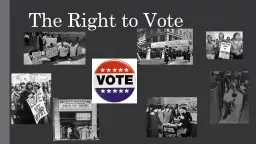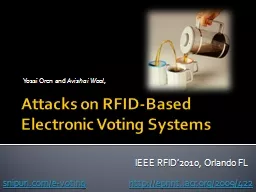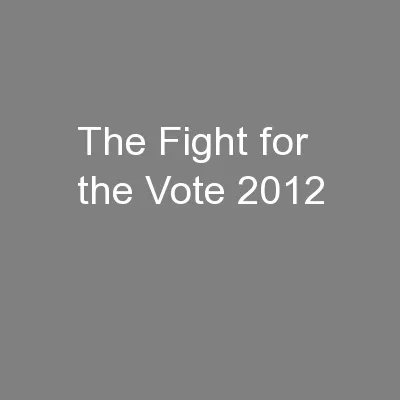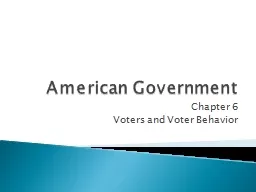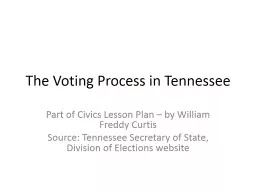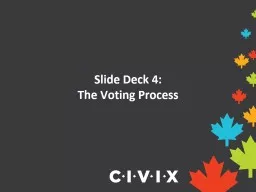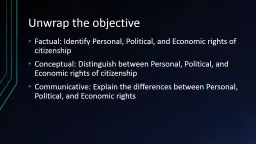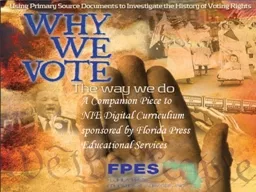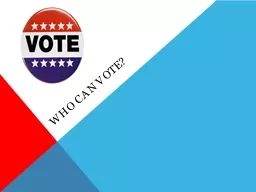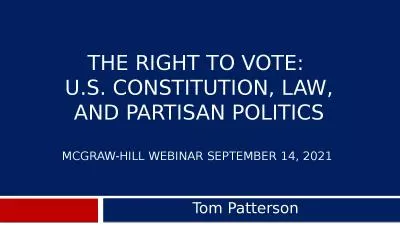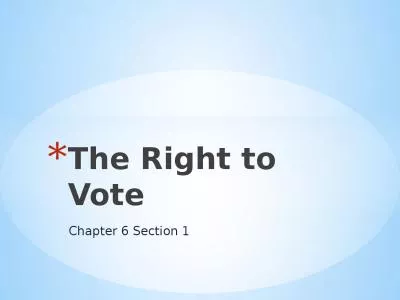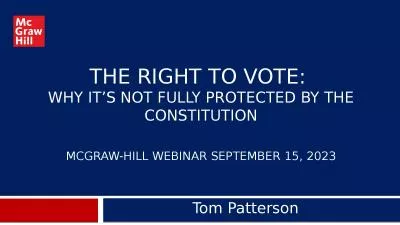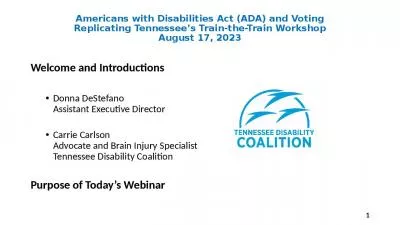PPT-The Right to Vote History of Voting Rights
Author : luanne-stotts | Published Date : 2019-02-10
Constitution left the question of who can vote to the states Suffragefranchise two terms that mean the right to vote Expansion of the electorate or the potential
Presentation Embed Code
Download Presentation
Download Presentation The PPT/PDF document "The Right to Vote History of Voting Righ..." is the property of its rightful owner. Permission is granted to download and print the materials on this website for personal, non-commercial use only, and to display it on your personal computer provided you do not modify the materials and that you retain all copyright notices contained in the materials. By downloading content from our website, you accept the terms of this agreement.
The Right to Vote History of Voting Rights: Transcript
Constitution left the question of who can vote to the states Suffragefranchise two terms that mean the right to vote Expansion of the electorate or the potential voting population has increased over time. Professor Jacqueline Hodgson. School of Law, . University of Warwick, UK. Systemic,. Psychological and Judicial Issues in Imprisonment. Trudeau Foundation; Les . Entretiens. Jacques Cartier. Lyon, . Yossi. Oren and . Avishai. Wool. , . http://eprint.iacr.org/2009/422. snipurl.com/e-voting. IEEE RFID’2010, Orlando FL. Agenda. What’s the Israeli e-Voting Scheme?. How can we break it cheaply and completely?. January 2012. . 2. . Registering [poor people] to vote is like handing out burglary tools to criminals. It is profoundly antisocial and un-American to empower the nonproductive segments of the population to destroy the country — which is precisely why Barack Obama zealously supports registering welfare recipients to vote.. Chapter 6 . Voters and Voter Behavior. Suffrage. means the right to vote.. . Franchise. is another term with the same meaning.. The . electorate. . is all of the people entitled to vote in a given election. . Part of Civics Lesson Plan – by William Freddy Curtis. Source: Tennessee Secretary of State, Division of Elections website. . Voter Eligibility. To be eligible to vote in Tennessee, you must be . - a citizen of the United States. . . Why do you think it is important to . VOTE. ?. Who is responsible for running Nunavut elections?. Elections . Nunavut. . is the . non-partisan . electoral agency . that oversees . all territorial elections and plebiscites in . U.S. typically has low voter turnouts.. Some argue it is a rational choice to not vote.. Political Efficacy. : The belief that one’s political participation really matters.. Civic Duty. : The belief the in order to support democratic government, a citizen should always vote.. Conceptual: Distinguish between Personal, Political, and Economic rights of citizenship. Communicative: Explain the differences between Personal, Political, and Economic rights . Agenda. Unwrap the Objectives. STATUS OF NINE APPROVED AMENDMENTS. . Nine constitutional amendments were approved for the November ballot. But six face lawsuits. Here are the measures and where they stand. : . AMENDMENT 1 . Repeal of Florida’s public campaign financing system. Has not been challenged.. Voting in America has changed dramatically since the birth of our nation. Initially, many groups were denied that right. Those groups included:. Voter Registration. Most states require registration at least . McGraw-Hill Webinar September 14, 2021 . Tom Patterson. WE THE PEOPLE, 14e . NUMBER ONE. . in American Government . Accessibility through Readability. Critical Thinking Emphasis. —Case Studies & Pedagogy. Vocabulary. Suffrage- the right to vote. Franchise- the right to vote. Electorate- all the people entitled to vote in a given election. Disenfranchised- denied the right to vote. Poll tax- a special tax demanded by States as a condition of voting. cONSTITUTION. McGraw-Hill Webinar September 15, 2023. Tom Patterson. WE THE PEOPLE, 14e . NUMBER ONE. . in American Government . Accessibility through Readability. Critical Thinking Emphasis. —Case Studies & Pedagogy. Replicating Tennessee’s Train-the-Train Workshop. August 17, 2023. Welcome and Introductions. Donna DeStefano . Assistant Executive Director. Carrie Carlson. . Advocate and Brain Injury Specialist .
Download Document
Here is the link to download the presentation.
"The Right to Vote History of Voting Rights"The content belongs to its owner. You may download and print it for personal use, without modification, and keep all copyright notices. By downloading, you agree to these terms.
Related Documents

